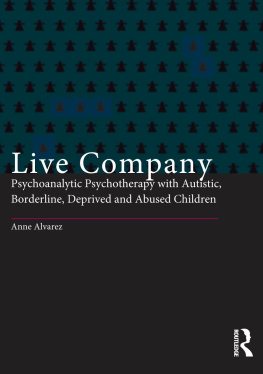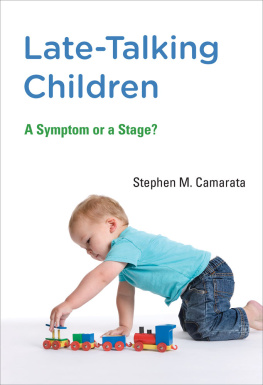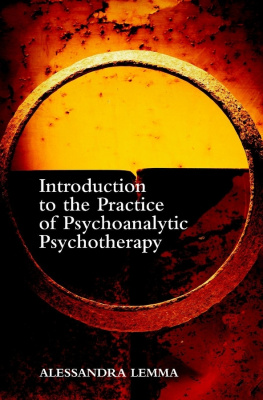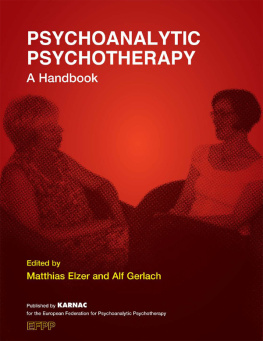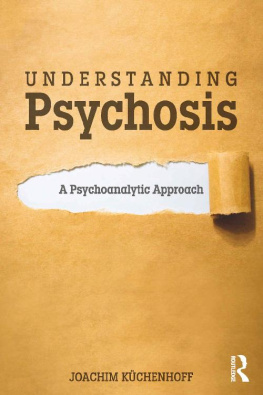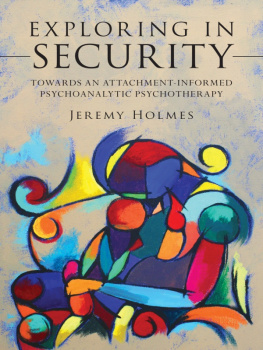LIVE COMPANY
Psychoanalytic psychotherapy with autistic, borderline, deprived and abused children
Anne Alvarez

First published 1992 by Routledge
27 Church Road Hove East Sussex BN3 2FA
Simultaneously published in the USA and Canada by Routledge
270 Madison Avenue New York NY 100 16
Reprinted 1993, 1996, 1998, 1999, 2002, 2003 and 2006
Transferred to digital printing 2011
Routledge is an imprint of the Taylor & Francis Group, an Informa business
1992 Anne Alvarez
Typeset in 10 on 12 point Garamond by
Falcon Typographic Art Ltd, Fife, Scotland
Printed and bound in Great Britain by
TJI Digital, Padstow, Cornwall
All rights reserved. No part of this book may be reprinted or reproduced or utilized in any form or by any electronic, mechanical, or other means, now known or hereafter invented, including photocopying and recording, or in any information storage or retrieval system, without permission in writing from the publishers.
British Library Cataloguing in Publication Data
Alvarez, Anne
Live company: psychoanalytic psychotherapy with
autistic, borderline, deprived and abused children
I. Title
618.928914
Library of Congress Cataloguing in Publication Data
Alvarez, Anne 1936
Live company: psychoanalytic psychotherapy with autistic, borderline, deprived and abused children/Anne Alvarez.
p. cm.
1. Autism Treatment. 2. Schizophrenia in children Treatment. 3. Schizophrenia in adolescence Treatment. 4. Borderline personality disorder in children Treatment. 5. Borderline personality disorder in adolescence Treatment. 6. Autism Treatment Case studies. 7. Child analysis. 8. Adolescent analysis. I. Title.
[DNLM: 1. Autism, Infantile therapy. 2. Child Abuse psychology. 3. Psychoanalytic Therapy in infancy and childhood. 4. Psychotic Disorders in infancy and childhood. 5. Psychotic Disorders therapy.
WS 350.2 A473L]
RJ506.A9A58 1992
618.9289820651-dc20
DNLM/DLC
for Library of Congress 9140447 CIP
ISBN 9780415060974 (pbk)
ISBN 9781135856434 (epub)
CONTENTS
PREFACE
This book is a record of my reflections on the experience of treating autistic, psychotic and borderline children by the methods of psychoanalytic psychotherapy. Some of the children and adolescents I shall describe are psychotic patients who begin to get better, some are borderline psychotics who have been hovering on the brink; all, I hope, give an idea of the two worlds of sanity and madness, the fragility of the one and the ugly and seductive power of the other. Such patients can be helped by psychoanalytic methods, but the treatment is long, arduous, and almost always places considerable strain on the therapist. Yet there is growing consensus that this strain and burden is in some way central to the treatment. Children whose minds as well as bodies have been damaged by the intrusions of sexual abuse, violence or neglect and others, quite different, who are handicapped by their own mysterious sensitivities to more minor deprivations, may experience a type of black despair and cynicism far beyond that felt by neurotic patients. A therapist suffering from too large a dose of therapeutic zeal or of passionate belief in the therapeutic power of psychoanalytic explanation, may experience great disappointment when the child doesnt seem to feel helped by her remarkable revelations, and doesnt seem to change. I have had many such disappointments myself. The patients terrors may be too overwhelming to be easily named, let alone explained; or his destructiveness or self-destructiveness may have developed, after perhaps years of practice, into high art. The psychotherapist has to be capable of being disturbed enough to feel for the patient, and at the same time sane enough to think with him, until the patients own ego, his thinking self, grows enough to be able to do it for himself.
Few of these chronically ill children have remained simply desperate, or simply terrified almost all have developed protective manoeuvres which may be as pathological as the original upset, and perhaps far more dead-end. The psychotherapist is witness to the struggle to become sane and to the draining efforts to remain so; the pull backwards into madness can be tremendous. The pull backwards for the therapist can also be very powerful. The actual process by which the child becomes more alive is often painful a girl who has behaved like a grotesque and retarded idiot all her life may face real terror at beginning to behave with grace and intelligence. Worst of all are the children who in large part have given up, who have abandoned hope, more or less ceased to have longings, and withdrawn to a point where they are almost beyond reach. Here the therapist may have to do more than feel and think for such cut-off or hardened patients; she may have, at times, to carry for them the knowledge that they, and the world, exist at all. Some, of course, remain beyond reach. Yet many do get better, and in fact these psychotic and borderline psychotic children are the ones whom, more and more, child psychotherapists are being asked to treat, because they have got beyond responding to ordinary human comfort, reassurance, or to the ordinary reasonable demands of parents and teachers.
In the introduction I shall trace the modern developments in psychoanalytic theory and technique which have influenced me and which form the foundation for the work described here. In the rest of the book I try to draw out implications of these modern developments for work with psychotic and borderline psychotic children. Most of the psychotic children I refer to are autistic, but some are schizophrenic. The first part of the book involves a narrative of my treatment of a severely withdrawn and psychotic autistic boy, Robbie, and of my struggles and failures to understand him. Robbies treatment has been exceedingly long and his improvements not dramatic. I started treating him on an infrequent basis in the late 1960s when few such children were receiving psychoanalytic therapy, and little was understood about how to help them. I have continued because, although terribly slow, his progress has been continuous and its pace has even quickened as I have come to understand him better, especially in regard to the awesome impact of his autism on the rest of his personality and development.
The rest of the book discusses issues, both theoretical and methodological, in Robbies treatment, and in work with other psychotic and borderline children, some of whom have been severely abused or deprived. Although the borderline psychotic children have some degree of ego development or sanity available to them, the technical problems for the therapist are often similar to those with iller, more egoless psychotic patients. On the subject of autism, I have tried to show some of the areas of convergence and divergence between the organicist and the psychodynamicist theories of autism. It is unfortunate that as yet there has been relatively little dialogue between the two groups in Britain. In this context, I should note that organic psychiatrists do not describe autistic patients as psychotic. They stress instead the element of cognitive deficit and the disorder of development, and there is no doubt that the earliness of the onset of autism makes an impact on the childs cognitive and emotional develoment which is far more devastating than that of psychiatric illnesses which emerge later in a childs life, such as schizophrenia. (see Kolvin

